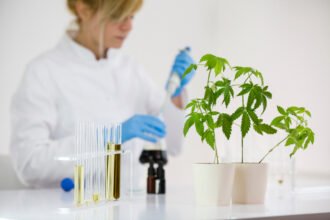Medicare Penalties Rising
- Medicare Penalties Rising
- Medicare Penalties Rising
- Rising Healthcare Costs Equal Long Term Economic Vulnerability
- Are We Lowering Costs — Or Shifting The Burden?
- Why Are Patients Readmitted?
- The “Lost To Follow-Up” Dilemma
- Economic Recession Also To Blame
- 3% Penalty — 2015 Not The Year To Start Having A Readmission Problem
Medicare Penalties Rising
For the third year in a row, Medicare will be increasing the percent penalty for hospitals who have high readmission rates: up now to 3% in 2015. Despite efforts through the ACA and readmission reductions programs, the rate of readmissions continues to rise.
Initially, Medicare attempted to stifle this by forcing hospitals to be transparent about their numbers. By making the number of readmissions public, the hope was that there would be a certain accountability and hospitals would then attempt to discern why their rates were so high.
When this didn’t prove to drop the rates as much as Medicare would have hoped, they tacked on a financial penalty that hospitals would need to pay if their rates continued to rise.
Rising Healthcare Costs Equal Long Term Economic Vulnerability
On the whole, rising costs of healthcare are contributing to the long term vulnerability of the U.S. economy. Particularly because $17 billion of the $26 billion annual dollars spent on readmissions has been deemed preventable by CMS. Last year alone Medicare fined 2,610 hospitals for high readmission rates. 721 hospitals, additionally, were fined a 1% reduction in their Medicare payments due to Hospital Acquired Infections — resulting in $373 million in spending.
As these trends continue to drift upwards, developing sustainable and dynamic ways to keep costs down without negatively impacting care quality has been, and is likely to continue to be, the primary focus of today’s healthcare leaders.
Are We Lowering Costs — Or Shifting The Burden?
One major concern, however, is that in their attempt to lower cost the cost will be, instead, shifted to the consumer. The concerns about “cost-shifting” are real and, considering that the other quarter of healthcare spending is made up of rising co payments and deductibles, one that may not be far off.
Statistically, 1 in 5 elderly patients will be readmitted within 30 days of discharge. Whenever a patient is readmitted, the cost of their care nearly doubles. But why are these patients landing back in the hospital in the first place?
Why Are Patients Readmitted?
More often than not, patients are readmitted due to a combination of factors relating not necessarily to their treatment while they are in the hospital, but what happens post-discharge. Or, as the case may be — what doesn’t happen.
When a patient is within 48 hours of discharge, one of the healthcare provider’s top priorities is medication reconciliation. While electronic health records can be helpful in reminding not just nurses, but doctors, of the importance of making sure a patient’s prescriptions are reviewed — and inactive medications removed from the record—the teaching involved in “med rec” is perhaps the most valuable aspect to the patient, and may be the key to reducing the likelihood they will be readmitted. When a patient is sent home, even if caregivers are present during their recovery, issues or confusion regarding their medication regimes can walk a very fine line between an inconvenience — and a fatality.
The “Lost To Follow-Up” Dilemma
In the same vein, even if patients haven’t necessarily had any changes in their medication regime, they are sometimes simply “lost to follow-up” post-discharge. Meaning that, once they leave the hospital, they are not followed up with in their primary care physician’s office or, by a nurse at the hospital by phone. These follow-ups are crucial, as often times patients are readmitted through the emergency room when they’ve come seeking treatment for a perceived complication, or, having encountered a post-operative situation that they and their families felt ill-equipped to handle.
Of course, if such is the case and a patient is able to follow-up with their primary care doctor this is ideal, but if a patient — and their hospital chart — is lost in the fray it’s possible that their regular doctor’s office may not have even realized they were hospitalized. This is becoming far less frequent an occurrence with the advent of the electronic medical record, but it does still happen. It exemplifies why a pointed effort must be made by hospital staff to establish follow-up procedure for patients.
Economic Recession Also To Blame
Of course, this uptick in spending isn’t entirely attributable to readmissions: the other major factor that hospitals and patients have to consider is the economic recession’s impact on healthcare dollars. With many patients unable to purchase private insurance, in part because of the rising deductibles and co payments previously mentioned, there is a greater dependence on government programs through Medicare and Medicaid — which we’ve seen reflected somewhat in Obamacare enrollments, though the program is still more or less in its infancy, so the long term economic impact hasn’t been definitively assessed.
3% Penalty — 2015 Not The Year To Start Having A Readmission Problem
In any case, with this year’s Medicare reduction in payment topping out at 3%, it’s in the best interest of hospitals nationwide to evaluate key metrics related to their readmission rates. Even if they haven’t previously had trouble with these numbers, given the amount of money they stand to lose, this wouldn’t be the year to be lax on their analysis.







